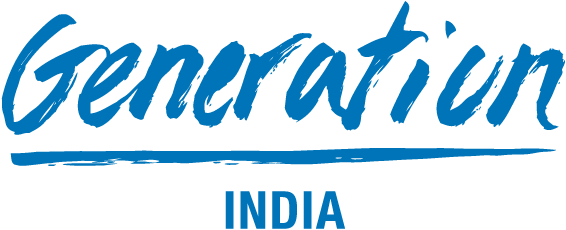External Evaluation
As we grow, independent third party evaluations help assess our program impact for learners, graduates, and employers, so that we can continue to improve and expand our programs.

How does Generation validate impact?
We have begun conducting evaluations in several of our countries with the support of experienced research agencies and academics.
In Generation India, Kenya and France, the evaluations focused on assessing the impact of our program on our learners’ employment trajectory and our employers’ hiring & retention processes.
Specifically in India, the evaluation also compares outcomes for our learners with other skill training programs. In all cases, we have seen strong employment outcomes with a faster time to placement and higher earnings. We have also received great feedback from our employer partners on the ease & quality of hiring from Generation.
The evaluations have also provided great insight into where we can continue to strengthen our programs.
As we continue to scale up in each of our countries, we are seeking to conduct more independent evaluations that can help to demonstrate our program impact across various programs and geographies.

Mathematica Impact Assessment of Generation Programs in India
With support from IKEA Foundation, Mathematica conducted a multi-year impact evaluation of Generation programs in India in 2022 and 2023. This evaluation assessed short-term outcomes (3-6 months post-graduation) in Phase 1 and longer-term outcomes (12-18 months post-graduation) in Phase 2 using qualitative and quantitative methods. The study assessed Generation’s impact outcomes for graduates, employers, and delivery partners using a quasi-experimental design in India by comparing outcomes for Generation graduates to those in public training programs for the same or similar professions.
Key Findings
Generation India:
- 66% of our graduates found employment within 90 days of graduation vs 21% in the comparison group, a 3X multiple
- 85% of Generation graduates were employed in jobs directly related to their Generation training, while 51% in the comparison group were able to do so.
- 14-38% higher wages earned by Generation graduates than the comparison group at three to six months post program, varying by profession.
- 44% of Generation graduates continued to be employed at ~15 months after graduation versus 25% among the comparison group. Mathematica was able to conclude with reasonable confidence that the positive difference in employment of 19 percentage points between the two groups is attributable to Generation’s methodology.
- About 8 in 10 employed female Generation learners were economically empowered (i.e. they provided input into most or all decisions about how to spend earnings)
- Generation programs are more cost-effective than those of the comparison group – the cost per percentage point of long-term employment achieved and the cost per dollar of average learner earnings are both 30% lower for Generation programs than for government-funded programs.
You can contact us at generationindia@generation.org to obtain the links to this report.
